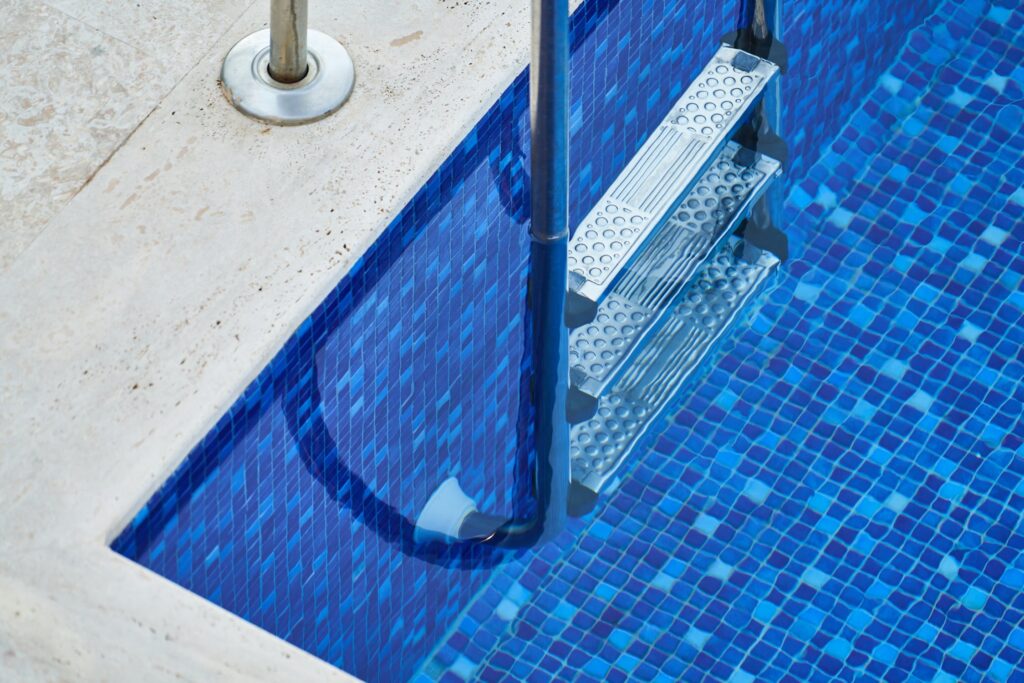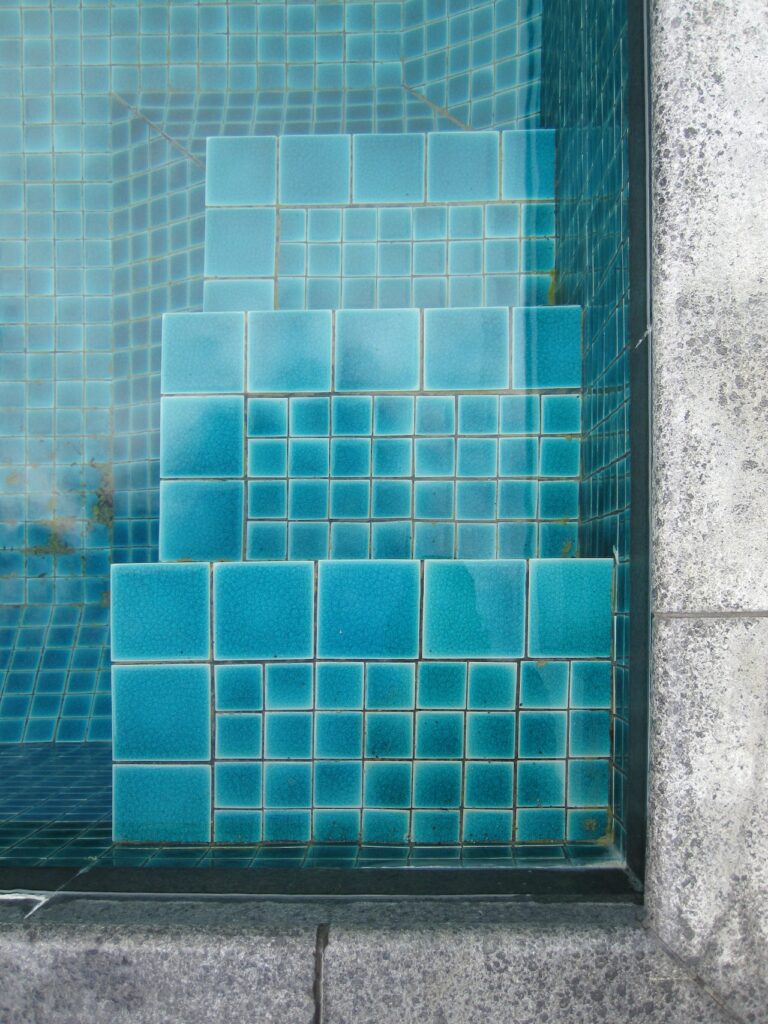
How to Remove Stains from Pool
Adding a swimming pool to your house is a significant financial investment. To begin, a considerable expense is associated with the installation. After that, we will start the maintenance. The annual upkeep and repair costs for a pool typically fall between $3,000 and $5,000.
Why Remove Pool Stains
After spending that much money, you naturally want your pool to look its very best at all times. What steps should you take if you see stains developing at the bottom of the pool? You can solve the issue in a variety of different ways. This article will provide the most comprehensive instructions for cleaning pool stains.
Is your swimming pool discolored?
It can ruin the appearance of your oasis if stains appear on the surface of your pool, and guests will be less likely to enjoy their time in the water. Do you have any idea what causes spots on people? Do you have any plans on how to remove pool stains? It is far more significant.
Depending on whether they are metallic or organic, the stains in your pool might be in several different colors. Depending on the object, the stains could be greenish-brown, bluish-red, blue-greenish black, greenish-red-brown, pinkish-red, or black-purple brown. It doesn’t seem like any of these hues would be very inviting. Don’t worry; we’ll explain what you should do in response to them when we get a chance.
Natural Discolorations
The buildup of organic debris in a pool, like leaves, grime, and algae, can frequently result in the formation of stains that are organic in nature. You can find green or brown spots on surfaces contaminated by algae, leaves, or other plant life. Typically, red or blue hue stains are caused by berries that grow in the area surrounding your pool. Adding some granular chlorine straight to the color and cleaning it with a brush is an excellent way to establish whether or not the stain is organic. If the stain disappears over time, the substance is most likely organic. Shocking the pool, applying granular chlorine directly to the color, and washing the affected area are three effective ways to eliminate organic stains. Inorganic pigments are more difficult to eradicate.
If organic pool stains are tough to remove, you can give them a “shock treatment” with enzymes and scrub them away with a stiff brush. It will get rid of the greenish spots on your pool quickly, and if you use an enzyme-based cleaner, it will typically get rid of organic stains before you ever scrape them. In addition, the acceleration of chemical reactions is another way that natural enzymes contribute to decomposing organic molecules and oils. A thorough scrubbing is still necessary to eliminate any residues or oils that may be present. Also, you might also shock the pool with chlorine while checking the water’s pH and alkalinity levels to ensure they are at the appropriate range.
Metal Stains
Metallic stains can appear on the surface of your pool if it has rusted copper lines, a water well, or even a rusting ladder. Sometimes rusting ladders are the culprit. Rust, manganese, iron, and copper are some examples of the types of metals that have the potential to discolor a pool.
Copper produces blemishes that are blue, green, teal, black, or dark purple, whereas iron leaves spots that are rusty brown, gray, or greenish-brown in color. The presence of manganese results in pink or dark brown areas, and calcium appears as white crystals. The most productive technique to get rid of metallic stains is to stop them from happening in the first place by guaranteeing that the pool’s pH is correct and regularly washing it. However, if you have these stains, you can eliminate them by using muriatic acid and a brush or by circulating ascorbic acid through the pool water for half an hour.
Stains of Rust
Rust is usually straightforward to spot, and you can almost always find it right around the metal pool fixtures or other metal items that have been left in the pool. The first sign of the metal’s deterioration is the appearance of a rust stain. You can put a handful of sodium bisulfate straight on the color and then brush it into the shade if you are still unsure whether or not the color is rust. If it begins to disappear over time, you may be sure it is a rust stain.
Rust may be removed relatively fast by a pool cleaning firm, even though it could appear like a difficult task. Suppose you choose to remove the pool stains on your own. In that case, you will need to apply dry acid to the stain-containing color, alternately use ascorbic or citric acid, and scrub the area between applications of dry acid.
Or Mineral Deposits Along the Waterline
Stains along the waterline of swimming pools have the appearance of a white or pinkish residue, and they are brought on by dirt and the oils produced by human bodies. Applying enzyme treatment, granular chlorine, and brushing are all effective methods for their removal. When removing waterline stains that are particularly difficult to clean, there are treatments available on the market that have been developed especially for this kind of stain.
Mineral stains resemble waterline stains; both types of colors take the shape of a powdery deposit that accumulates directly above the waterline. It frequently occurs in water supplies that contain high concentrations of calcium. Since vinegar has a good track record of success when removing hard water deposits, you can use a solution that consists of water and vinegar in equal parts to scrub the deposits away.
What Causes the Stains on Pools
There are a variety of elements that might cause stains in pools. Each of the potential reasons, organic and inorganic, such as mustard algae, berry bushes, and other plant matter, as well as inorganic causes such as heavy metals, has its unique treatment.
You first need to give the pool a preliminary treatment to prepare it for the solution. After that, you’ll be able to diagnose the issue accurately.
After you have determined the cause of the stain, you can think of a solution to the problem. Let’s define what’s causing some of the most prevalent pool stains and get them cleaned up.

Best Methods Available to Remove Stains in Swimming Pool
First, we shall discuss stains caused by organic matter. Take a good look at the hue of the color. If the color is green, brown, red, or blue, organic matter is the suspect most likely responsible for it.
Algae
Several different algae can thrive in a pool that is not maintained correctly—the green algae that float on the pool’s surface and can attach to the sidewalls. The bottom of the collection is an ideal environment for mustard algae and other yellowish-brown algae.
Applying chlorine directly to the discoloration is the most effective method for removing these stains as quickly as possible. Use a brush to scrub it, and you’ll see it disappear. Conduct a water test to determine what other substances may be present, then treat the water on the results.
Bushes that Bear Fruit
Have you seen any stains that are red, blue, or purple? Do you have any berry bushes in your yard? Berries cause these discolorations and other fruits to fall into the pool and explode on the water’s surface. The berries, like a rug in your house, can potentially leave stains on your collection.
Check the area around the stain for bushes that might be shedding their leaves. Eliminate the brush to prevent further stains from occurring.
After removing all organic stuff, shock the pool to kill any remaining bacteria. After the shock, you should give the pool floor and walls a good scrub. It will remove any coloration that is still present.
Foliage
Long pools that are not disturbed frequently may develop stains from fallen leaves and dirt. When you uncover your swimming pool after the winter, you will probably observe these stains there.
You should clean the pool, then remove any residual material, and lastly, you should scrub any stained parts. Then, the pool should be shocked, and you should adjust the chemical balance. Lastly, conduct some water tests to ensure the levels are where they should be.
The most frequent inorganic staining agents are now going to be discussed.
Discoloration Caused by Heavy Metal
Additional specialist treatments are required when dealing with stains such as those caused by rust, iron, or copper scale. Scrub the whole surface of the pool, and then skim off any debris you find. Conduct a water test to determine the current state of the water.
Bring the results to your neighborhood pool store, and the staff there will be able to make some specific product recommendations based on what they see. They can read the results and will be able to tell you what kind of metal stains you are dealing with.
When you have decided on the required solution, you will be able to purchase the appropriate remover. There are particular removers for iron scaling, manganese scaling, copper scaling, and just about any other type of scaling.
To remove the pool stains, take the remover and apply it to the affected areas. To assist the remover in doing its job, you can brush it into the paint.
In the first place, where do metal stains come from?
These deposits of heavy metals might originate from a wide variety of various locations.
The corrosion of copper and brass pipes is where copper first appeared. It will result in stains that are either blue, green, teal, black, or a very dark purple.
Iron can come from iron pipes and fittings corroded or from well water. Stains caused by the iron will appear rusty brown, gray, or greenish-brown in color.
Additionally, the presence of manganese, which can be found in well water, can cause pink, dark brownish-black, or purple stains.
After you have identified the kind of stain you are dealing with, the next step is to track down the root of the contamination. Then, pipes that are worn out should be replaced. Check that the wells are waterproof and won’t let any water into the pool.
Continued Upkeep and Safety Measures are Being Taken
Finding the cause of any staining in a swimming pool is essential to avoiding the problem in the long run. There are various choices available to you if you have a problematic backyard in which it is difficult to avoid staining. Consider getting a black pool liner so the stains won’t be as noticeable in between cleanings.
A pool sealer should prevent the surface from turning yellow or stained. If you do this, you will have a better chance of continuing to prevail over the pool icky.
You can avoid most stains by shocking the pool regularly and maintaining the chemicals at the appropriate levels. It will act as a barrier against algae’s growth and prevent algae’s formation.
Not into working with chemicals? Think about establishing some organic pools. Osmosis, rather than chemicals, is used in these purification processes. You can keep up the cleanliness of your pool and prevent any substances from being absorbed into your skin by employing natural aquatic plants that filter water.

Maintain a Stunning Level of Cleanliness Year-Round in Your Swimming Pool
We hope that by observing these guidelines, your pool stains will become a thing of the past. You can maintain the pristine appearance of that pool by taking a few extra precautions throughout the year. When it comes to almost everything, a little protection can save you much trouble later on.
The necessity of resurfacing the pool is the very last thing you want to encounter. That is a fix that is both costly and simple to avoid.
The necessity for stain removal is avoided by performing scheduled maintenance and cleaning regularly. If you’re too hard-pressed to maintain your pool on your own, you might want to look into hiring a professional for assistance.
Call Miracle Maintenance to Effectively Remove Pool Stains
You can have faith that Miracle Maintenance will do an excellent job if you choose them to aid you in taking care of your pool when you need help. In Arizona, we serve residential and commercial clients, and our team has real expertise of over 20 years in the pool industry. We provide an extensive variety of services to meet the needs of both types of consumers. Since 1997, the employees at Miracle Maintenance have been providing the people living in central Arizona with service that is both trustworthy and performed by trained professionals. We provide free estimates, promptly arrange the repair, and immediately begin working for you. In Arizona, hundreds of clients come back to us for both residential and commercial work, and we have also traveled as far as Maryland and Seattle to work on larger-scale industrial projects there.










No Comments
Sorry, the comment form is closed at this time.